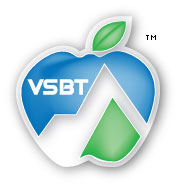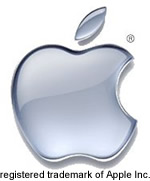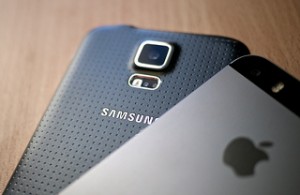Corporations have every right to protect their trademarks, including their brand trademarks such as product names, slogans and logos. However, it’s important not to assume a false power with those trademarks simply because your company is bigger than others.
A perfect example is in the news this week. In a cease and desist letter, Apple threatened the Victoria School of Business and Technology with legal action if the school doesn’t stop using their own apple logo, which they have been using without any problems since 2005. Below are the two logos side-by-side. What do you think?


One could argue that the logos are similar and both businesses operate in technical markets (although one manufactures technical products and one educates people about technology), however, there are two main questions that come to mind in this trademark debate, and I put the onus on Apple who appears to be using their size to bully the little guy.
- Can Apple truly claim the singular right to use an apple in its brand identity?
- Is the case of the Victoria School of Business and Technology apple logo worth the negative publicity that common David vs. Goliath battles such as this typically bring to the aggressor?
What can we learn from this? First, select a logo and imagery to communicate your brand that are unique. Second, pick and choose your battles.
While it’s likely that there is someone in Apple’s legal or marketing departments who automatically generates and sends cease and desist letters, and it’s possible that Apple will drop the legal threats once the powers that be review the matter, the damage is already done. In short, don’t pick an apple or other common object for your logo. Is your brand common or unique? Use imagery that communicates your brand message and promise and distinguishes your business from others, and avoid these types of legal entanglements that teeter on a fine line between justified and Goliath-esque.
Susan Gunelius is the author of 10 marketing, social media, branding, copywriting, and technology books, and she is President & CEO of KeySplash Creative, Inc., a marketing communications company. She also owns Women on Business, an award-wining blog for business women. She is a featured columnist for Entrepreneur.com and Forbes.com, and her marketing-related articles have appeared on websites such as MSNBC.com, BusinessWeek.com, TodayShow.com, and more.
She has over 20 years of experience in the marketing field having spent the first decade of her career directing marketing programs for some of the largest companies in the world, including divisions of AT&T and HSBC. Today, her clients include large and small companies around the world and household brands like Citigroup, Cox Communications, Intuit, and more. Susan is frequently interviewed about marketing and branding by television, radio, print, and online media organizations, and she speaks about these topics at events around the world. You can connect with her on Twitter, Facebook, LinkedIn, or Google+.



This is a very interesting trademarking issue probably best left to the lawyers. But from what I can gather, infringing on someone else’s trademark rights has to do with consumer confusion more than anything else.